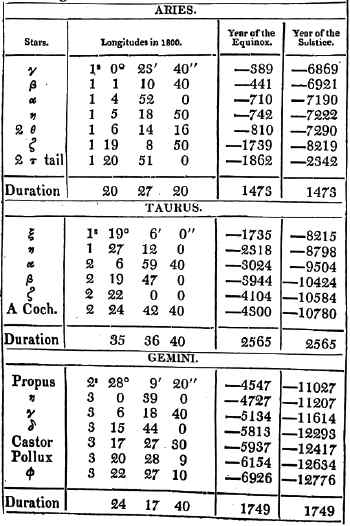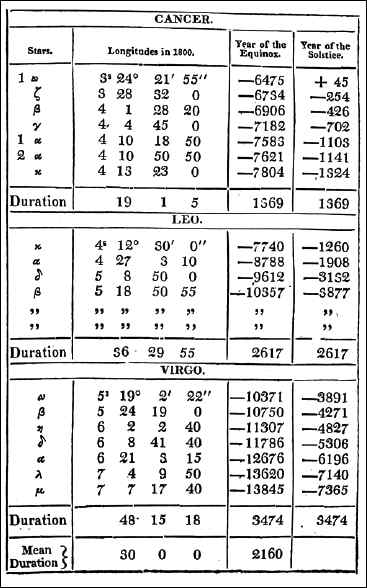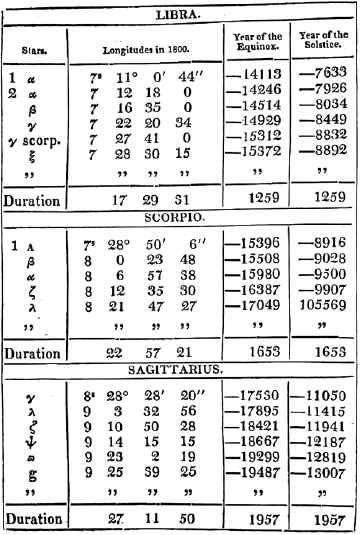 |
The, female figures who embrace them are not placed lengthwise, but in the
breadth of the bands; so that one is across near the eastern entrances the
head and arms towards the north, and the feet towards the lateral wall, or
southward, and the other is at the bottom of the portico, also across and
facing the first.
 The nearest band to the axis of the portico, or north, first presents, on The nearest band to the axis of the portico, or north, first presents, on
the side of the entrance, or eastward, and towards the head of the female
figure, the Lion, placed a little backwards and going towards the bottom, the
feet towards the lateral wall; behind the Lion, at the commencement of the
band, are two smaller Lions; befre it is the Scarabæus, and then the Twins
advancing in the same direction; then the Bull, the Rain, and the Fishes, close
to each other, placed across the middle of the band. The Bull with his head
towards the lateral wall, the Ram towards the axis. The Aquarius is farther
off, and takes the same direction towards the bottom as the three first signs.
 On the band nearest to the lateral wall and the north, we see at first, but On the band nearest to the lateral wall and the north, we see at first, but
at some distance from the bottom or west, the Capricorn, which is going in
an opposite direction to the Aquarius, and directs his course eastward, or
towards the entrance of the portico with the feet turned towards the lateral
wall. Close toit is the Sagittary, corresponding with the Fishes and the Ram.
He advances towards the entrance, but his feet are turned towards the axis in
an opposite direction to those of the Capricorn.
 At a certain distance in front, and near each other are the Scorpion and a At a certain distance in front, and near each other are the Scorpion and a
female holding a balance; finally, a little more in front, but still sufficiently
distant from the anterior, or eastern extremity, is the Virgin, who is preceded
by a Sphynx. The Virgin and the female who holds the balance have their
feet towards the wall, so that the Sagittary is the only sign which is placed
with its head differently to those of the other signs.
 Northward of Esne, is a small isolated temple, equally directed towards Northward of Esne, is a small isolated temple, equally directed towards
the east, and whose 'portico has also a zodiac:* it is on two lateral and
separated bands. That which is along the south side begins with the Lion,
who is advancing towards the bottom, or westward; the feet turned towards
the wall, or
|


 1-10
11-20
21-30
31-40
41-50
51-60
61-70
71-80
81-90
91-100
101-110
111-120
121-130
131-140
141-150
151-160
161-170
171-180
181-190
191-200
201-210
211-220
221-230
231-240
241-250
251-260
1-10
11-20
21-30
31-40
41-50
51-60
61-70
71-80
81-90
91-100
101-110
111-120
121-130
131-140
141-150
151-160
161-170
171-180
181-190
191-200
201-210
211-220
221-230
231-240
241-250
251-260




![[made with GoClick]](imgs/goclick.gif)